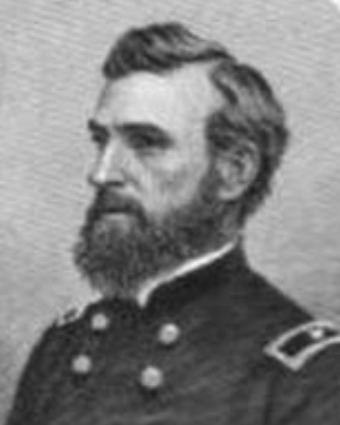Battles and wars American Civil War | Years of service 1861 - 1865 Name William Powell | |
Allegiance United States of America Place of burial Chicago, Illinois, United States Commands held 2nd West Virginia Volunteer Cavalry Regiment | ||
William Henry Powell (May 10, 1825 – December 26, 1904) was an was an American soldier who fought for the Union in the American Civil War. He began as a captain, and quickly ascended to higher roles in the cavalry, including regiment commander, brigade commander, and division commander. Powell was awarded his country's highest award for bravery during combat, the Medal of Honor, for heroism at Sinking Creek, Virginia, when, as leader of a group of 22 men, he captured a 500-man enemy camp, without a single loss of life on November 26, 1862. He was honored with the award on July 22, 1890.
Contents

In July 1863, Powell was shot while leading cavalry in Wytheville, Virginia. Although surgeons on both sides of the conflict believed his wound was fatal, Powell survived—and became a prisoner of war. He was later exchanged, and returned to his command of the 2nd West Virginia Volunteer Cavalry Regiment. In 1864, Powell commanded brigades, and later a division, while fighting mostly in the Shenandoah Valley under the direct supervision of General William W. Averell in an army commanded by General Philip Sheridan. Powell led cavalry in numerous battles, including Moorefield, Opequon, and Fisher's Hill. He resigned as a brigadier general in January 1865 to attend to family health issues. He was later brevetted to major general. Powell returned to his original profession working in the iron making industry, and was active in the Grand Army of the Republic, a fraternal organization of Union veterans of the American Civil War.
In a letter sent to headquarters in 1864, General George Crook said "Colonel Powell has served with me often since the commencement of the war. He has distinguished himself in every battle he was engaged in under me. He has been recommended by me on several occasions, for promotion. I regard him as one of the best cavalry officers I have ever seen in the service."
Army career
Powell was able to sign up the men who worked under him at the Lawrence Iron Works in Ironton, Ohio, and so was appointed an officer, a common practice in the civil war. Powell and his men formed the B Company of the 2nd West Virginia Cavalry, and he was appointed their Captain on November 8, 1861. Powell was quickly appointed their major after his strong performance in the Battle of Jannett's Creek in Eastern Kentucky on January 7, 1862. The 2nd West Virginia Cavalry was part of the Kanawha Division commanded by George Crook who learned of the location of two Confederate camps, belonging to the 14th Virginia Cavalry.
Powell was successively appointed major on June 25, 1862; lieutenant colonel on October 25, 1862 and colonel on May 18, 1863. Powell was wounded in the chest and captured at Wytheville, Virginia on July 18, 1863 and exchanged on February 22, 1864. Powell was appointed a Brigadier-General on October 19, 1864, and resigned on January 5, 1865.
Biography
Powell was born in Pontypool, Wales, and emigrated to Tennessee at the age of five. Powell was the manager of the Lawrence Iron Works in Ohio before he enlisted in the army in Ironton, Ohio. Powell died in Belleville, Illinois on December 26, 1904, having worked as a manufacturer of nails after the war, and later supervised the construction of a nail factory. Powell was buried in the Graceland Cemetery in Chicago, Illinois.
